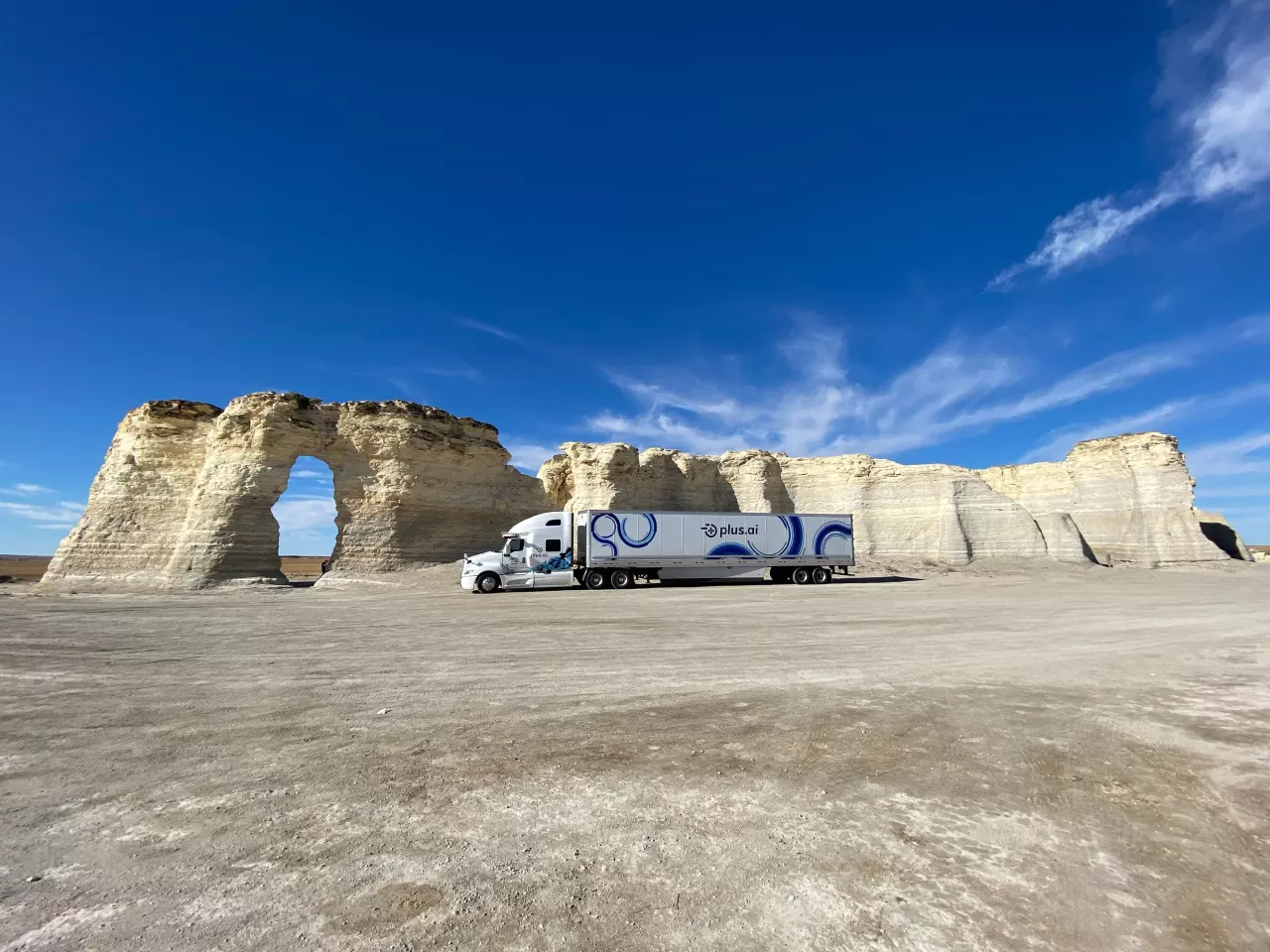In an illustration of how far self-driving vehicles have come, an autonomous articulated lorry recently drove a refrigerated load of 40,000 lb (18,100 kg) of butter 2,800 mi (4,500 km) across the continental United States. Equipped with a driving technology package by Plus.ai, the truck and its cargo from the Land O' Lakes company made a hub-to-hub journey from Tulare, California to Quakertown, Pennsylvania.
Self-driving technology has been steadily developing for a number of years, but there are more challenges than just ones of engineering and software. There's also the fact that such machines must operate in the messy world of everyday life with all the baggage and complications that have built up over generations.
A case in point is goods hauling in the United States. America isn't just a large place, it's a collection of 50 semi-autonomous states with widely varying laws, geography, and climate, which means that a cross-country trip by road can still be something of an adventure, as anyone who's driven through South Dakota in the middle of winter can attest. That's a lot for a machine to adapt to.
For the recent demonstration, the hauler was equipped with Plus.ai’s package, which includes multimodal sensor fusion, deep learning visual algorithms, and Simultaneous Location And Mapping (SLAM) technologies. These helped guide the vehicle during its passage along United States interstate highways 15 and 70.

During the trip, the autonomous systems did most of the driving, though there was a safety driver and a safety engineer aboard at all times with the former taking over the controls as needed, as is required by law. The journey took the truck through a variety of terrains and weather conditions as it passed through the Rocky Mountains, the plains of Kansas, and along roads in snow and rain over a three-day period.
"This cross-country freight run with Land O’Lakes shows the safety, efficiency, and maturity of our autonomous trucks, which are already delivering freight for other partners several days a week," says Shawn Kerrigan, COO and co-founder of Plus.ai. "Continued advances in our autonomous trucks will make it possible for these quick cross-country runs to be the norm in the future. We are excited to demonstrate what our technology can already achieve today while meeting rigorous autonomous driving safety and food transportation compliance standards."
Source: Plus.ai








